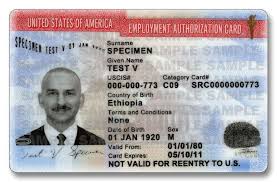In looking at news reports over the last several weeks, several jumped out at me. A couple discussed immigration and social security, and several more discussed immigration and education spending. These are two very different issues, but both are being impacted by immigration – both those coming with documentation and those coming without.
First, in terms of those coming to the US with documentation. In terms of the article on Education spending, that is not really addressed because, according to the article, those people are paying taxes, etc., so they are paying for their educational costs. Regarding social security, immigrants coming to the US on valid non-immigrant and immigrant visas are helping to keep our Social Security system solvent. Why is that? According to the article in the Motley fool:
Most people legally migrating to the U.S. tend to be younger, which is an extremely important point. These are people who will spend decades in the labor force contributing to Social Security via the payroll tax. The 12.4% payroll tax on earned income (wages and salary) was responsible for providing approximately $981 billion (90.1%) of the $1.088 trillion in revenue Social Security collected in 2021.
Motley Fool, January 28, 2023
The intermediate-cost model in the 2022 Trustees Report — the “intermediate-cost model” is what the Trustees view as the outcome likeliest to happen — is based on average annual total net immigration of 1,246,000 people. Between July 1, 2012, and June 30, 2017, fewer than 955,000 total net migrants entered the U.S. annually, according to data from the World Bank. If net migration into the U.S. continues to fall, or even steadies at these reduced levels, it’s all but a certainty that Social Security’s funding shortfall will grow.
As can be seen, immigrants to the US, in general, are younger, thereby providing more productive years in which they are earning taxes and paying into the system. And in fact, the lowering levels of immigrants being allowed in legally is HURTING our ability to fully fund Social Security.
What about those coming in without documentation? Surely they are costing us more money? The answer is not relatively that easy. In terms of education, because of a Supreme Court case from 1982, Plyer V. Doe, 457 U.S. 202, ALL children are eligible for free public education, including those without documentation. So States are required to spend money to educate those who come to the US and are age-eligible for public education (under the age of 21). How much does this cost? It is difficult to figure out exactly, but looking at the figures that The Hill used in a recent article, here is what it comes out to:
The Pew Research Center says that the number of illegal immigrants expelled under Title 42 – which allows the government to expel immigrants during a public health emergency – declined during 2022, from about 50 percent to about a third. That would leave some 1.5 million.
There was another estimated 600,000 who avoided border patrol in 2022, for an estimated total of 2.1 million new undocumented immigrants living in the country.
If we use TRAC’s estimate of 37 percent being children, that’s about 777,000. Of course, not all of them are school age. If we subtract, say, a third of them for being too young to enter public school, that leaves us with about 513,000 school-age children.
Multiply that times the average cost of a public education, $14,840, and that equals about $7.6 billion in new public education costs for just one year’s worth of undocumented children. And while the migrants have spread out across the country, a relatively small number of states and cities must cover most of those costs.
The Hill, 1/31/2023
While the article goes on to say that the adults who come over without documents will eventually work, maybe, and equivocate about whether they can legally work or will work, the article does present a stark picture of approximately $7.6 billion in additional costs every year. Again, however, this is not the full picture. While those who ENTERED this year may not be able to contribute immediately, there are other people in the US without documentation – how much do they contribute? Well, again, according to the Motley Fool article:
What’s more, a study from New American Economy showed that undocumented workers contributed $13 billion in payroll tax revenue in 2016. These undocumented workers either used a friend’s or family member’s Social Security number to obtain work, or their employer failed to properly vet the worker. Either way, more than 1% of Social Security’s annual revenue derives from undocumented workers, yet not one cent of benefits from traditional Social Security will be returned to these workers.
Motley Fool
So while there may be $7.6 billion in education costs a year, there is $13 billion in payroll taxes – which more than covers those costs. In addition, our Social Security system is receiving 1% of its annual revenue from these sources, and these are people who will never see any of that social security money.
As stated at the beginning of this article, it is tricky to look at the costs and benefits of immigration, either for those who come with documentation or those who come without documentation. But overall, almost every study has shown that there is a net benefit not just to those who come over with the correct papers but also to those who have entered without documentation. Hopefully, someday, our politicians will look at our immigration system and how much it is hurting our economy and our society and start making policies based upon that instead of the current climate of scare politics being used to frame the immigration debate.






 Not everyone realizes but there are huge backlogs of cases for employment based immigrant visas. For about 1 year now the EB-1 category (Extra-ordinary Ability, Outstanding Professor and Researchers and Intra-Company Transferees) category has been backlogged about 1 year for most of the world and several years for China and about 4-5 years for India. The EB-2 category, while current for most of the world, has been backlogged about 4 years for China and about 10 years for India. The same is true of the EB-3 category. For those from India and China especially, the requirement of having to wait 10 years or more for a green card is hard on the family. It can cause children, who may be 2 or 3 when they arrive in the US, to age out before a green card can be obtained – forcing these now grown Children to either go home or get their own visas and begin their own processes. Furthermore, the employees are working for years without hope of major pay increases or promotions, for fear of being fired (if they ask and are denied) and loosing their place in line.
Not everyone realizes but there are huge backlogs of cases for employment based immigrant visas. For about 1 year now the EB-1 category (Extra-ordinary Ability, Outstanding Professor and Researchers and Intra-Company Transferees) category has been backlogged about 1 year for most of the world and several years for China and about 4-5 years for India. The EB-2 category, while current for most of the world, has been backlogged about 4 years for China and about 10 years for India. The same is true of the EB-3 category. For those from India and China especially, the requirement of having to wait 10 years or more for a green card is hard on the family. It can cause children, who may be 2 or 3 when they arrive in the US, to age out before a green card can be obtained – forcing these now grown Children to either go home or get their own visas and begin their own processes. Furthermore, the employees are working for years without hope of major pay increases or promotions, for fear of being fired (if they ask and are denied) and loosing their place in line.
